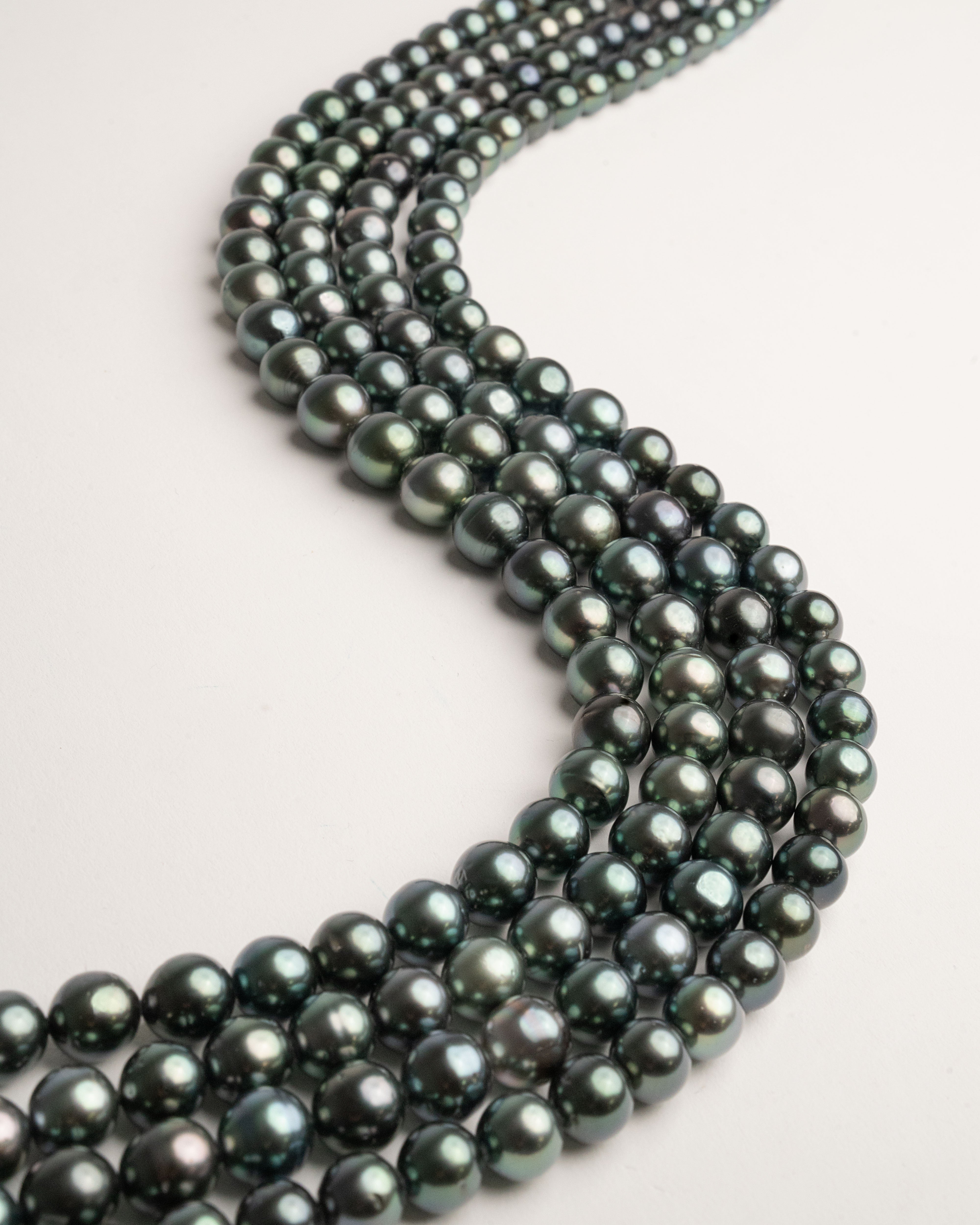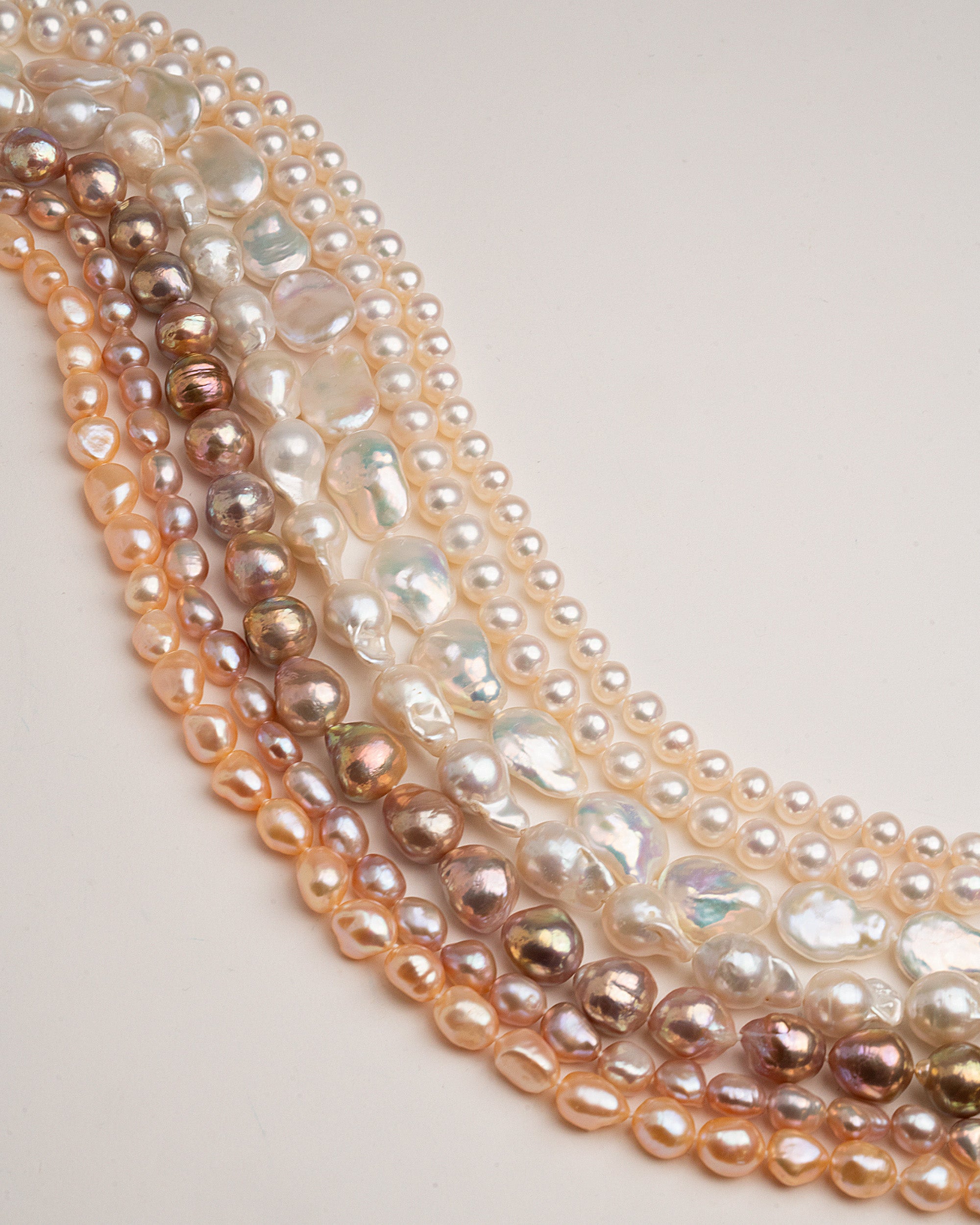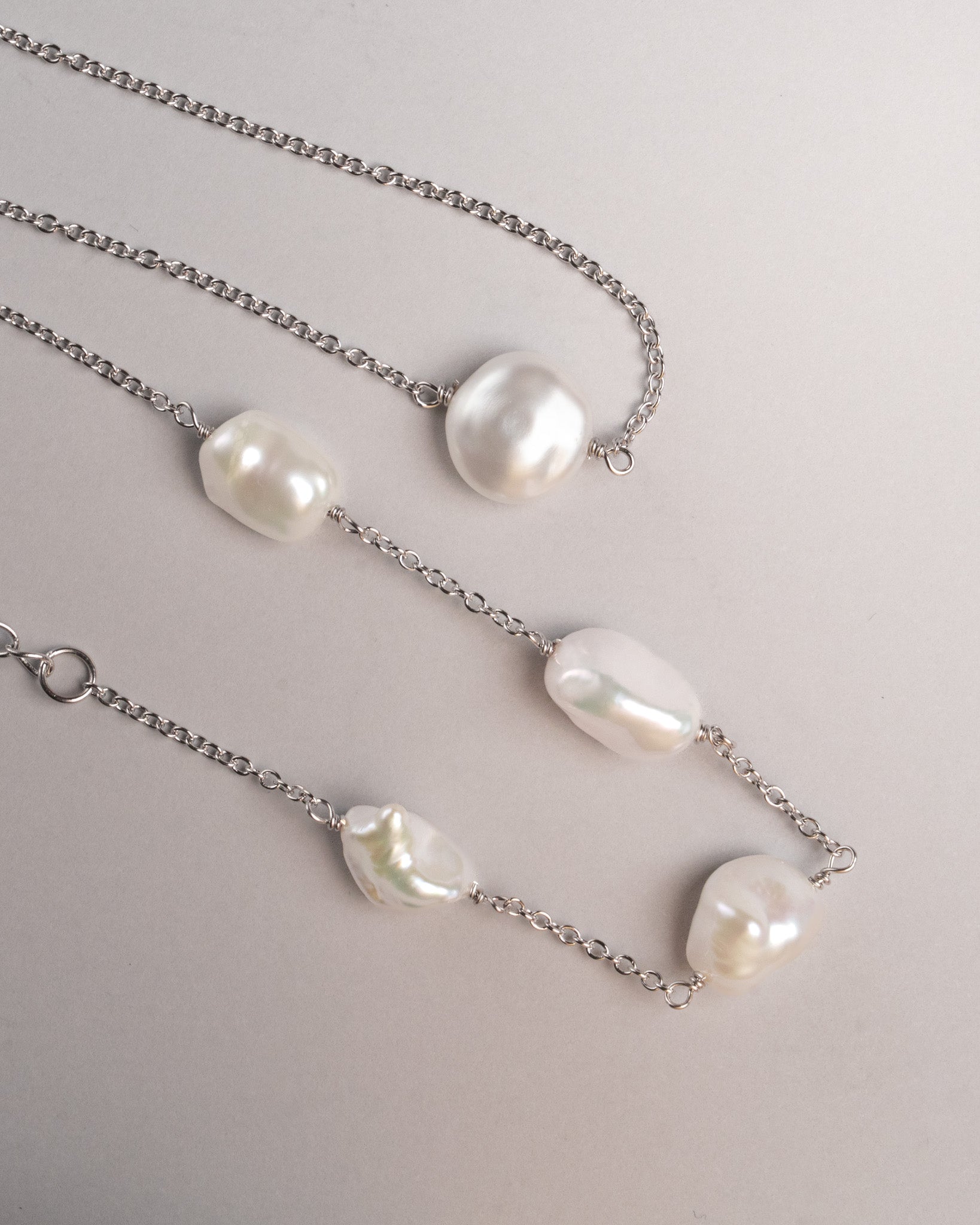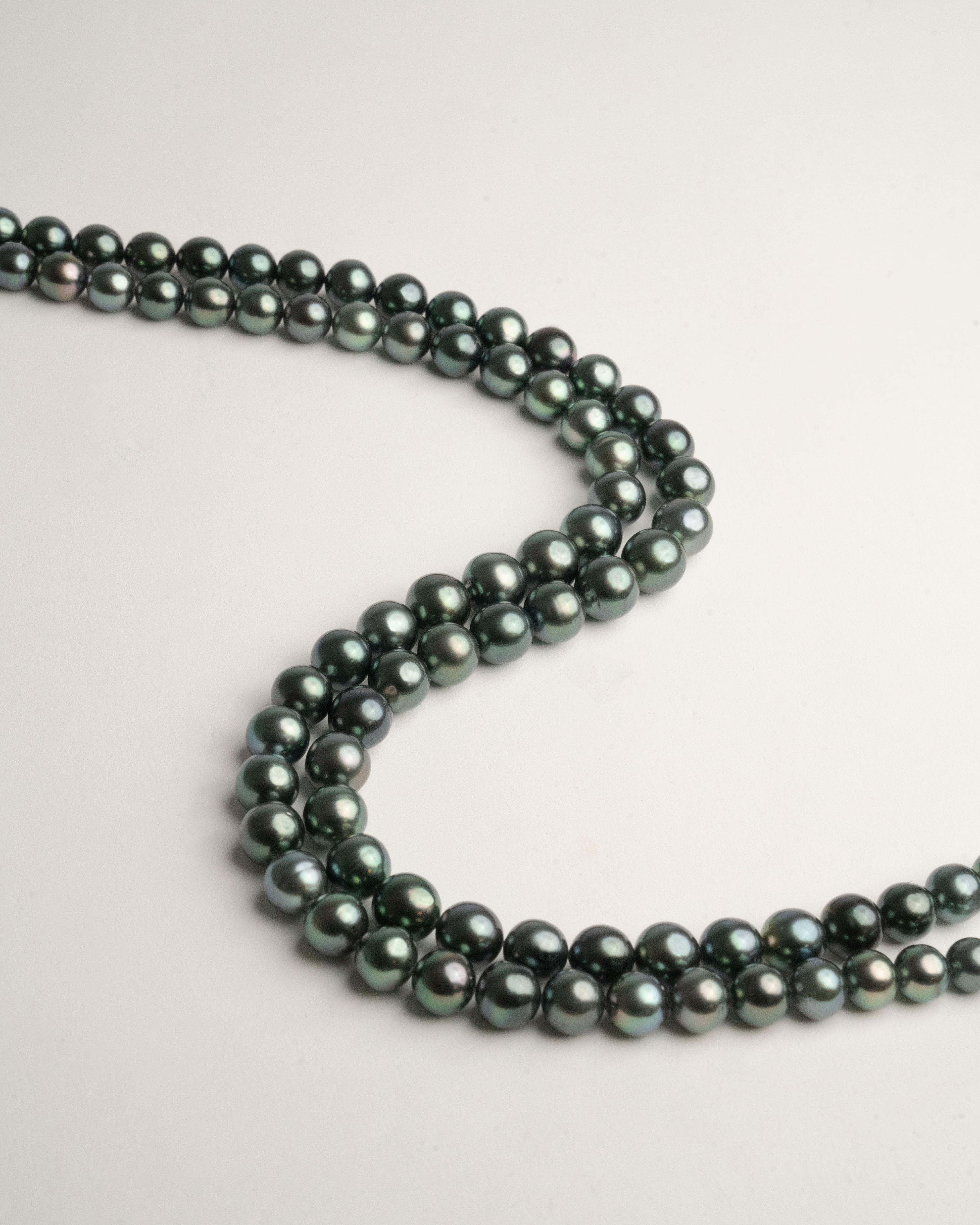
All about pearls and their colors
ALL ABOUT PEARLS AND THEIR COLORS
Pearls are one of the most versatile gems used in jewelry. There are a variety of shapes, sizes and colors.
We can find a wide range of colors for both saltwater and freshwater pearls. Although the most common color is white, we can find them in shades of cream, grey, pink, gold or even black. There are many factors that can influence the color of the pearl, such as:
- The type of mollusk: the colors of the pearls are mainly influenced by the color of the lip of the mollusk. If the shell has dark tones on the outside, the pearl will have those same tones.
- The thickness of the mother-of-pearl: The mother-of-pearl is the substance with which the mollusk creates the pearl. In general, the thicker the nacre, the deeper and richer the color of the pearl.
- Human action: There are various cultivation techniques that can be used to influence the color of pearls.
- Dying the pearl: there are natural colored pearls, but they can also be dyed. Next, we will see the natural colors in which you can find each type of pearl, so that you can also identify which ones have been treated.
AKOYA PEARLS
Akoya pearls are characterized by their neutral colors and shades. Most of the pearls that we can find are white or gray with pink, green or silver undertones. We can also find them in bluish tones with silver nuances, but these colors are very rare and difficult to find.
In many cases, Akoya pearls go through a process called "pinking." It is such a common process in Akoya pearls that it is not even noted in the reports.
Freshly harvested Akoya pearls are known in Japan as "hamage". These usually show a greenish tone that is not too pretty.
Akoya hamage are sent to processing plants to undergo the Japanese process known as "Maeshori" which involves washing the pearls to remove oyster debris and stains.
The pearls then go through a bleaching and rosing process, which enhances the color, warmth and brilliance of the Akoya pearl. This gives them the light pink hue that is so popular in Japan.

Akoya pearls are not naturally black, so if you see black Akoya pearls you should know that they have undergone radiation treatment or organic dyeing. Approximately 20% of the pearls in a vintage are naturally gray in color, the less pretty ones are usually those that are selected to be dyed black.

Discover the Akoya Pearls from Secret & You
FRESHWATER PEARLS
Once again, the most common color is white, but also, freshwater pearls have a wide range of natural colors, they are the only pearls you can find in pastel shades of pink/peach, white, lavender or multicolour. Edison freshwater pearls can also be found in incredible metallic tones, deep purple, light gold and greenish.

We can also find them in dark and gray tones, but not in a natural way, they have been subjected to a color treatment, generally with gamma radiation or dyed. The treatment is permanent, once a pearl is treated it maintains that color.

BLACK PEARLS OF TAHITI
The Pinctada Margaritifera, commonly known as the black-lipped oyster, produces one of the most exotic pearls that can be found, the Tahiti pearls, We often refer to them as black pearls, but actually these pearls can be found in a wide range of shades of dark, magenta, greenish, bluish, gray and black.
Unlike other types of pearls, these are characterized by having a naturally dark color, making them one of the most coveted and valuable pearls in the world. Due to its wide range of colors, making a necklace with the same tones is a very difficult task.

See the collection of Black Tahiti pearls
Black pearls are the most common, but Tahitian pearls come in a wide range of shades, the more exotic the shade of the pearls, the more valuable they tend to be. Some of the most valued are those known as "peacock", since it presents a range of colors between greenish, magenta and black that is reminiscent of the colors of a peacock's feathers. Other highly desired ones are the pistachio-colored ones, the cherry-colored ones and finally the chocolate-colored ones, however the latter are really scarce and it is difficult to find them untreated.
PEARLS OF THE SOUTH SEA
The pearls of the South Sea known in Spain as Australian, as well as being famous for their large size, are characterized by their natural golden and silver tones .
In addition to Australia, they are grown in Indonesia, the Philippines, Myanmar and other regions. In each region, the pearls obtained are usually more abundant in one tone or another.
There is a small but notable distinction between the different shades of white of pearls according to their provenance:
- “Cool” white tones with pink undertones are characteristic of white pearls from the Australian South Sea. These are the rarest shades that can be found in this type of pearl.
- “Warm” white or cream-colored tones are found in white South Sea pearls grown in the Philippines. They have a slight yellowish hue.
- The grayish white or silvery white tones of the white South Sea pearls also come mainly from Australia and Indonesia. They are the most frequent nuances.

You can also find these pearls in natural gold tones. The main producers of golden pearls are the Filipinos. Within the golden variety, you can find pearls from a light cream color, going through a champagne tone, to a deep gold. The deeper the gold, the higher the value of the pearl. Like white pearls, these have different shades of silver, pink or bronze, but these tend to be less visible because the main body color is very intense.

As you can see, the natural colors of pearls and their possibilities are practically endless, so the only thing left to do is choose your favorites. At Secret & You we offer a wide range of designs with different colored pearls.
Lastly, remember that when in doubt, natural is always better.






